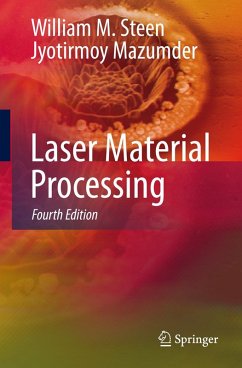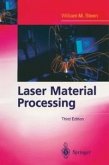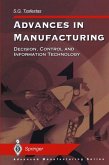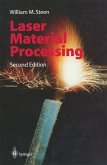Lasers play a major part in the processing of the disparate materials used in engineering and manufacturing. The range of procedures in which they are involved is ever increasing. The informal style of Laser Material Processing (4th Edition) will guide you smoothly from the basics of laser physics to the detailed treatment of all the major materials processing techniques for which lasers are now essential.
. Helps you to understand how the laser works and to decide which laser is best for your purposes.
. New chapters on laser physics, drilling, micro- and nanomanufacturing and biomedical laser processing reflect the changes in the field since the last edition, updating and completing the range of practical knowledge about the processes possible with lasers already familiar to established users of this well-known text.
. Provides a firm grounding in the safety aspects of laser use.
. Now with end-of-chapter exercises to help students assimilate information as they learn.
. The authors' lively presentation is supported by a number of original cartoons by Patrick Wright and Noel Ford which will bring a smile to your face and ease the learning process.
Laser Material Processing (4th Edition) will be of use as university or industrial course material for senior undergraduate, graduate and non-degree technical training in optoelectronics, laser processing and advanced manufacturing. Practising engineers and technicians in these areas will also find the book an authoritative source of information on the ever- expanding use of industrial lasers in material processing.
Praise for the third edition:
"It is the great merit of this book to offer a compact survey on laser material processing. A useful and fascinating book, pleasant to read with many useful figures and examples of industrial applications. It is a textbook for advanced students in this field, but also a reference book for engineers."
H. Weber, Technische Universität Berlin
"Laser Material Processing is a clear and instructive textbook for students who will become the next generation of laser specialists, and it is a good source of updated knowledge for practicing engineers and technicians in optoelectronics, laser processing, materials treatment, and advanced manufacturing. The book also will be helpful as a reference source. The chapters are largely independent of one another, and a reader interested in only one topic may be satisfied by reading all of parts of the relevant chapter without going to other chapters. Well written, with many useful diagrams and examples of industrial applications, Steen's book is a good guide in the field."
The Industrial Physicist
"Material processing is one of the most important applications of lasers.... Laser Material Processing gives a compact survey and can be used as university or industrial course material.... The book will guide the reader smoothly from the basics of laser physics to the detailed treatment of all major material processing techniques for which lasers are essential.... I can recommend this book as an authoritative source of information on the rapidly expanding use of industrial lasers in material processing. "
Optik
. Helps you to understand how the laser works and to decide which laser is best for your purposes.
. New chapters on laser physics, drilling, micro- and nanomanufacturing and biomedical laser processing reflect the changes in the field since the last edition, updating and completing the range of practical knowledge about the processes possible with lasers already familiar to established users of this well-known text.
. Provides a firm grounding in the safety aspects of laser use.
. Now with end-of-chapter exercises to help students assimilate information as they learn.
. The authors' lively presentation is supported by a number of original cartoons by Patrick Wright and Noel Ford which will bring a smile to your face and ease the learning process.
Laser Material Processing (4th Edition) will be of use as university or industrial course material for senior undergraduate, graduate and non-degree technical training in optoelectronics, laser processing and advanced manufacturing. Practising engineers and technicians in these areas will also find the book an authoritative source of information on the ever- expanding use of industrial lasers in material processing.
Praise for the third edition:
"It is the great merit of this book to offer a compact survey on laser material processing. A useful and fascinating book, pleasant to read with many useful figures and examples of industrial applications. It is a textbook for advanced students in this field, but also a reference book for engineers."
H. Weber, Technische Universität Berlin
"Laser Material Processing is a clear and instructive textbook for students who will become the next generation of laser specialists, and it is a good source of updated knowledge for practicing engineers and technicians in optoelectronics, laser processing, materials treatment, and advanced manufacturing. The book also will be helpful as a reference source. The chapters are largely independent of one another, and a reader interested in only one topic may be satisfied by reading all of parts of the relevant chapter without going to other chapters. Well written, with many useful diagrams and examples of industrial applications, Steen's book is a good guide in the field."
The Industrial Physicist
"Material processing is one of the most important applications of lasers.... Laser Material Processing gives a compact survey and can be used as university or industrial course material.... The book will guide the reader smoothly from the basics of laser physics to the detailed treatment of all major material processing techniques for which lasers are essential.... I can recommend this book as an authoritative source of information on the rapidly expanding use of industrial lasers in material processing. "
Optik
Dieser Download kann aus rechtlichen Gründen nur mit Rechnungsadresse in A, B, BG, CY, CZ, D, DK, EW, E, FIN, F, GR, HR, H, IRL, I, LT, L, LR, M, NL, PL, P, R, S, SLO, SK ausgeliefert werden.









